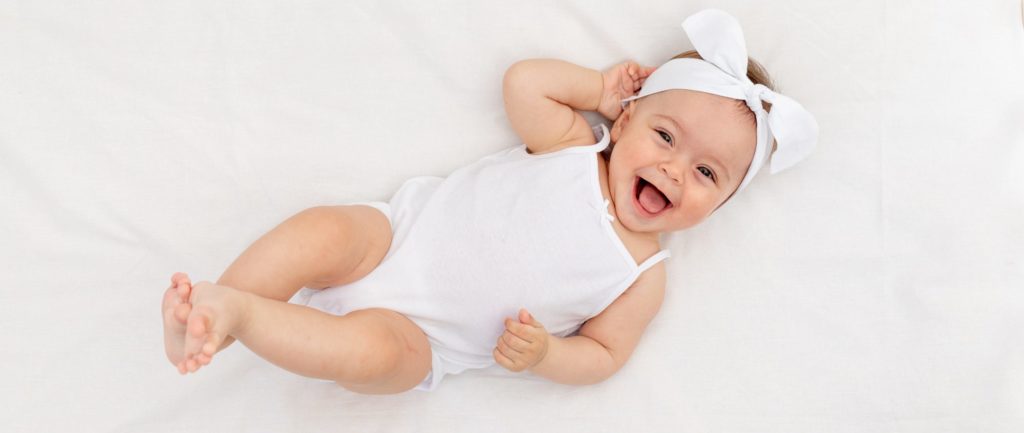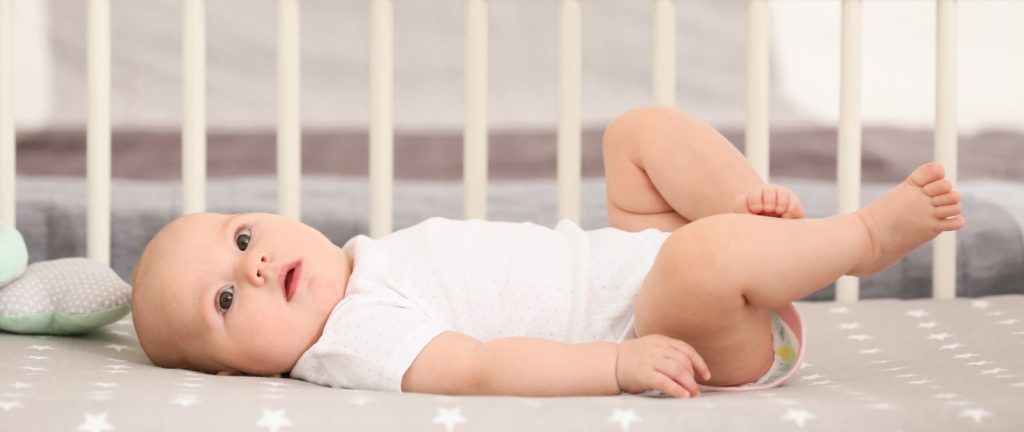People rocked babies with the intention of helping them fall asleep long before the lullaby “Rock-a-Bye Baby” shot to popularity in the late 1800s. In fact, cradles — pieces of furniture specifically designed for rocking babies — first came about in ancient times. However, researchers are only just beginning to formally study the benefits of rocking.
We explore the potential benefits of rocking a baby, as well as tips for how to best rock your baby and when to wean them off being rocked to sleep.
Benefits of Rocking a Baby
Despite its long history, researchers have yet to determine whether rocking helps babies sleep. Early research on rocking babies found that the practice reduced crying in infants who had been pricked with a needle, but did not promote sleep. Subsequent research found that rocking did promote sleep in infants facing similar situations.
More recently, further research has suggested that swinging, which is a gentle movement similar to rocking, can successfully be used in combination with other calming methods to soothe babies back to sleep and promote self-soothing. Some experts also suggest that rocking a baby or young child can help promote bonding and emotional regulation as part of a bedtime routine.
Perhaps surprisingly, not all rocking research has involved babies. Researchers have found that rocking may improve some aspects of sleep for young adults taking an afternoon nap, as well as promote sleep in mice. Preliminary research has found that being rocked during sleep may synchronize brain activity, which can improve sleep quality and memory.
That said, other studies of adults have found that rocking does not improve memory or increase relaxation. More research is needed to fully understand the impact rocking has on both adults and babies.
How to Rock Your Baby to Sleep
In one study, researchers define rocking as a gentle movement that involves moving a person from side to side at a rate of one cycle every four seconds. While most parents likely do not think in these scientific terms, they can benefit from knowing that rocking is a slow and gentle back-and-forth movement.
A variety of rocking techniques exist. Some parents might prefer to stand and lightly sway from side to side with a baby in their arms, while others might sit in a rocking chair and rock back and forth while cradling the baby.
Different types of furniture allow caregivers to rock babies without holding them. The cradle is one of the oldest rocking inventions. Newer items, like automated rocking seats and swings, can also provide gentle rocking to an infant. However, these devices are designed for brief, supervised use and should not be used for an extended period in place of a crib or bassinet with a flat sleeping surface.
Shop the Best Crib MattressesWhen to Stop Rocking Your Baby to Sleep
As with sleep training, there is no universal agreement about the best age to stop rocking a baby to sleep. Studies show that rocking a baby to sleep is slightly more common at 4 months old than at 10 months. Each family must make their own decision about when to stop rocking, or turn to their pediatrician for advice if feeling uncertain.
Caregivers might want to stop rocking a baby once they begin encouraging them to sleep through the night. In fact, some researchers consider rocking a maladaptive activity, because babies can grow to associate it with sleep and require rocking in order to fall asleep. As children grow and sleep schedules change, it may be more appropriate to include rocking as a before-bed activity, but stop once the child becomes drowsy.
How to Wean Your Baby Off Being Rocked to Sleep
Weaning a baby off being rocked generally involves using sleep training techniques, which may begin around 6 months of age or older. Parents might start by taking longer to enter an infant’s bedroom when the baby wakes up crying during the night. This technique is called controlled crying, and it involves gradually increasing the amount of time a baby is left to cry. Over time, the baby should grow to learn to stop crying on their own, without the parent rocking them.
Camping out is another sleep training method that might feel less stressful to parents than controlled crying. This strategy involves staying in the bedroom as the child is falling asleep but not picking them up. Each night, the parent gradually increases their distance from the baby’s bed, until one night they finally leave the bedroom altogether. As with controlled crying, the infant should become less dependent on their parents and more capable of self-soothing themselves to sleep with time.
References
Ask the Sleep Doctor
Have questions about sleep? Submit them here! We use your questions to help us decide topics for future articles, videos, and newsletters. We try to answer as many questions as possible. You can also send us an email. Please note, we cannot provide specific medical advice, and always recommend you contact your doctor for any medical matters.










